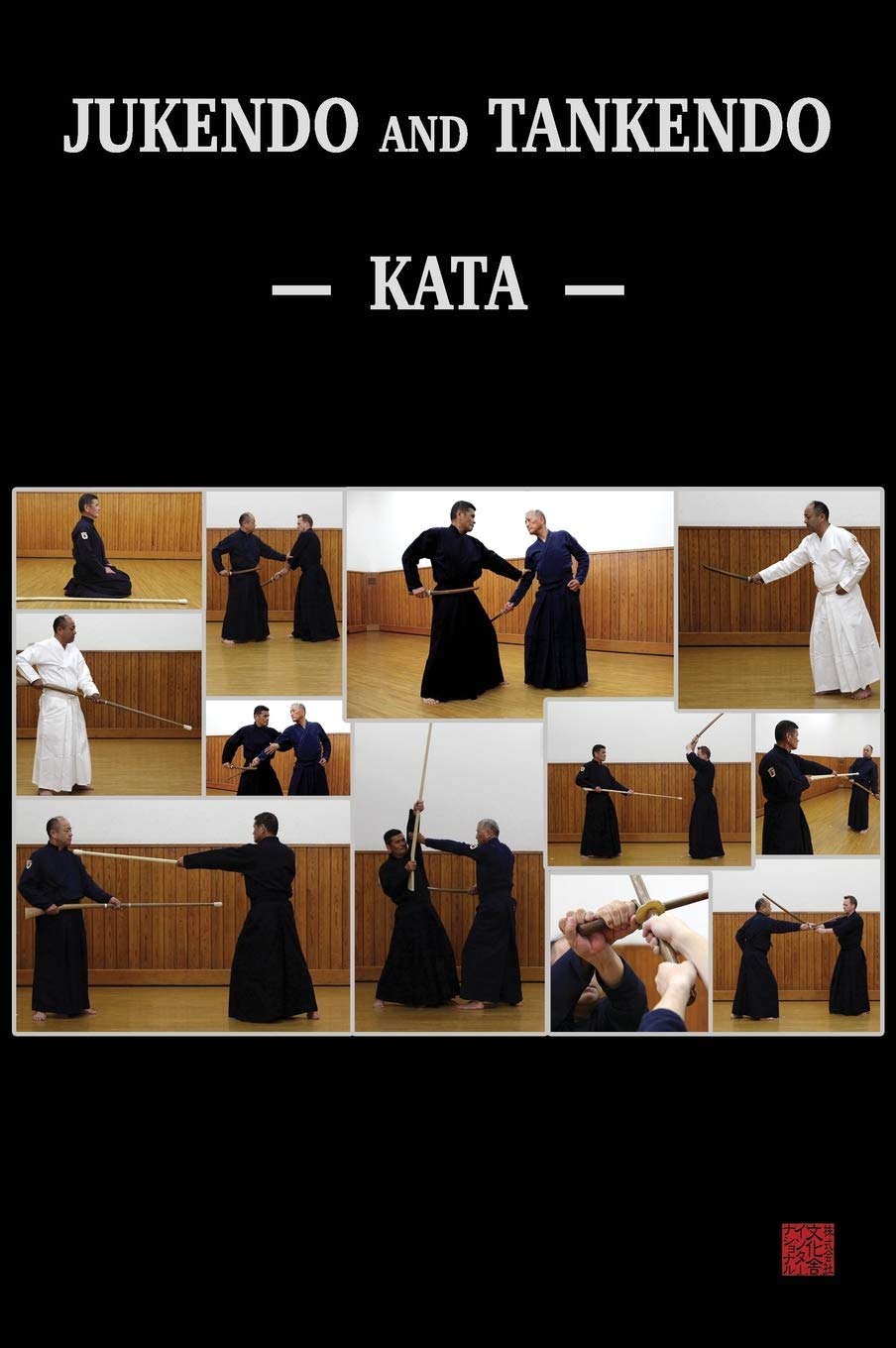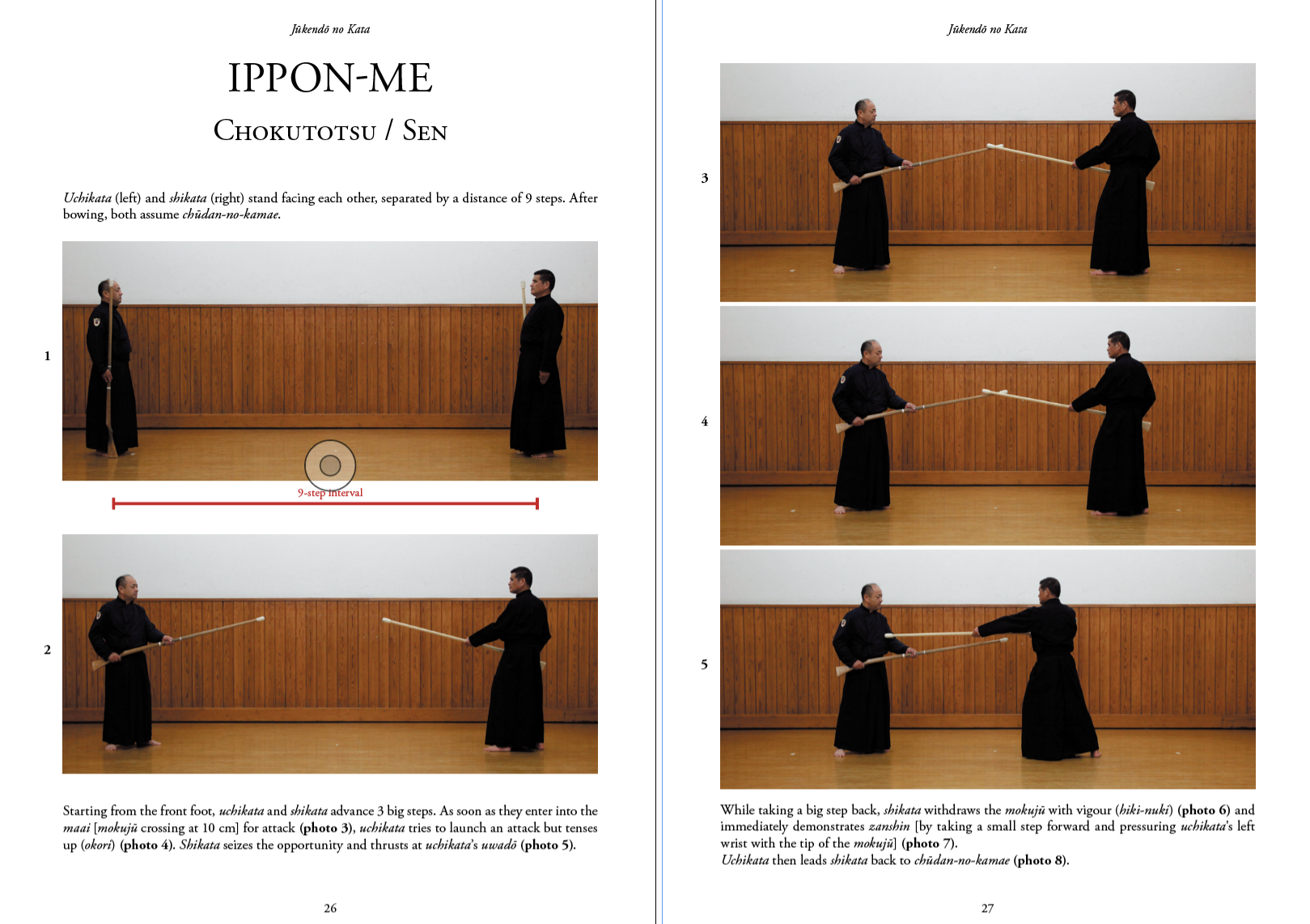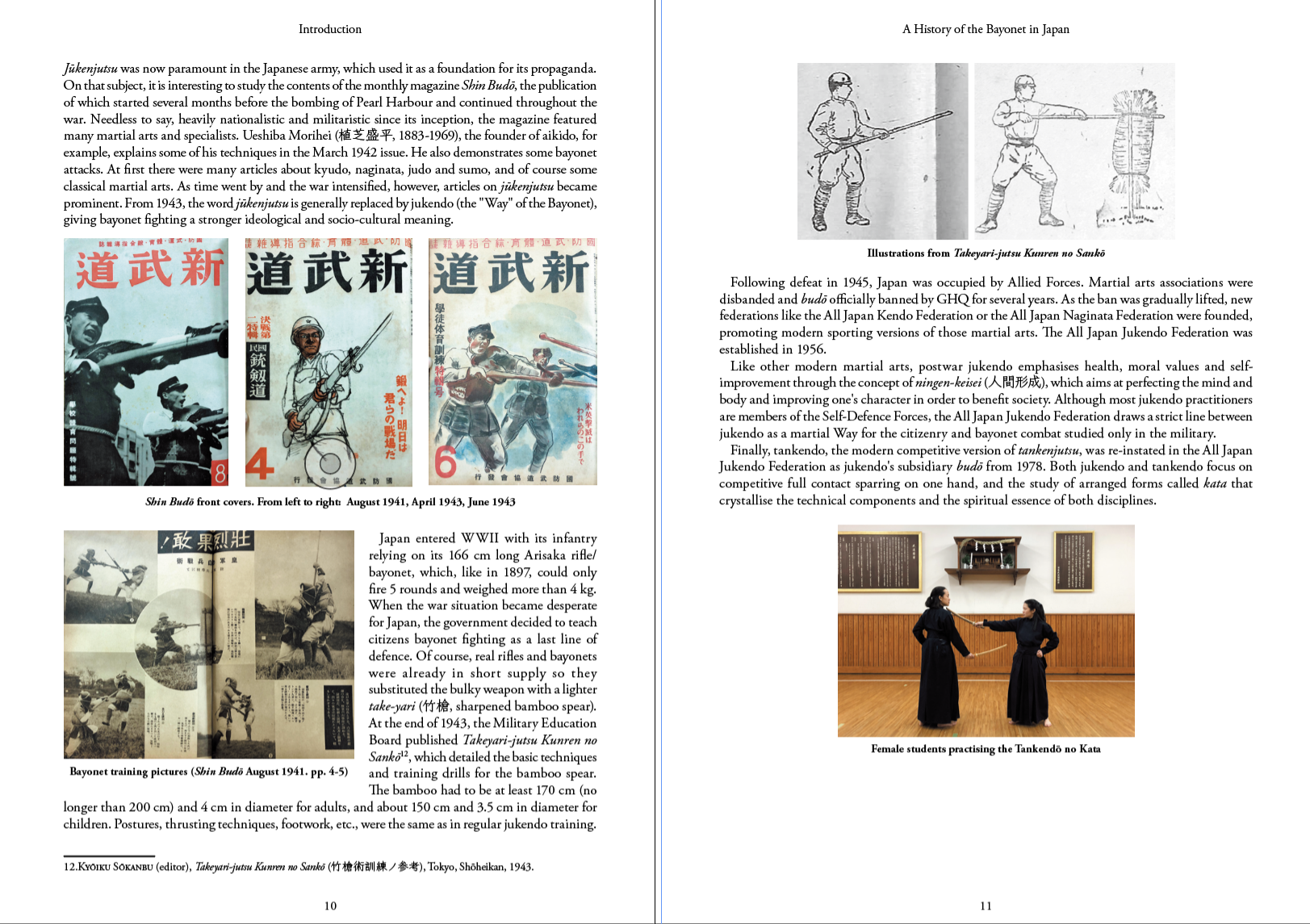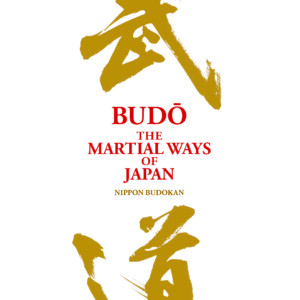
Jukendo and Tankendo Kata

by Baptiste Tavernier
The ultimate purpose of practising kata is to gain an understanding of the essence of jukendo and tankendo. The kata combines the basic technical components of jukendo and tankendo in set forms with a fixed order. Through kata one can train one’s spirit, posture and attitude; learn combinations of techniques and how to judge maai; understand the different thrusting, striking and cutting opportunities; learn to evaluate irimi-seitai possibilities; acquire precise techniques and experience the exquisiteness of zanshin.
Jukendo and tankendo kata were created in order to teach proper etiquette, posture, grip, footwork, use of internal energy, breathing, opportunities, vigilance, and offence and defence patterns. By studying kata, one will be able to improve posture, correct technical flaws, acquire proper thrusting and striking actions, accurately judge interval, and understand the concept of taking the initiative. The practitioners movement will become sharper and faster, a more dignified attitude will be nurture, a stronger spirit will manifest, and the eyes will become more piercing and alert.
AVAILABLE IN PRINT FORMAT! SEE THE LINKS BELOW!!
Contents
Acknowledgements
Introduction
ーA History of the Bayonet in Japan
ーJukendo and Tankendo Kata
ーKata Overview
Jūkendō no Kata
Tankendō no Kata
Jūken Tai Tanken no Kata
Mokujū Tai Tō no Kata
Tanken Tai Tō no Kata
Appendix 1: Jukendo & Tankendo Training Guidelines
Appendix 2: The Budo Charter



















No comments yet.